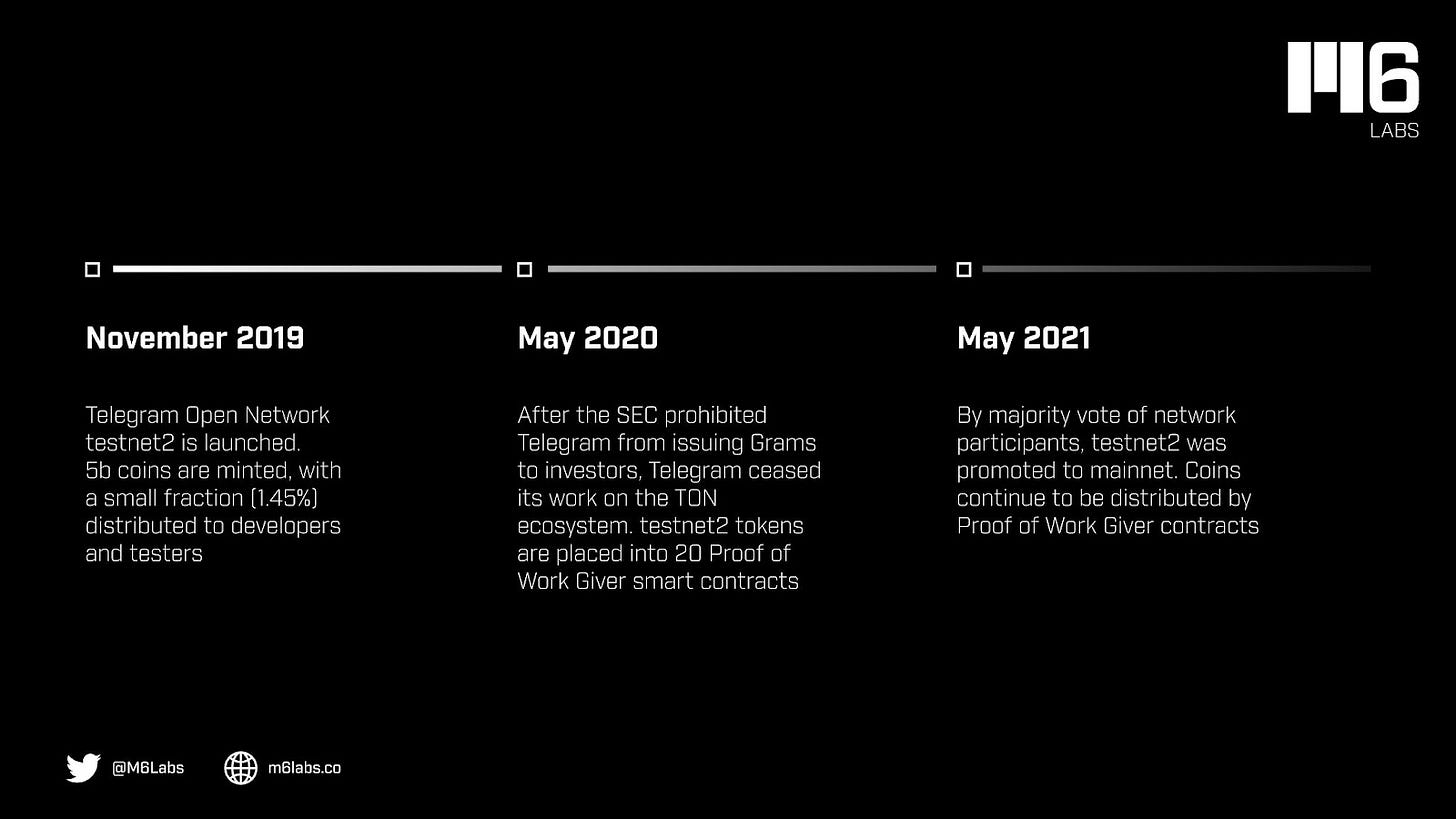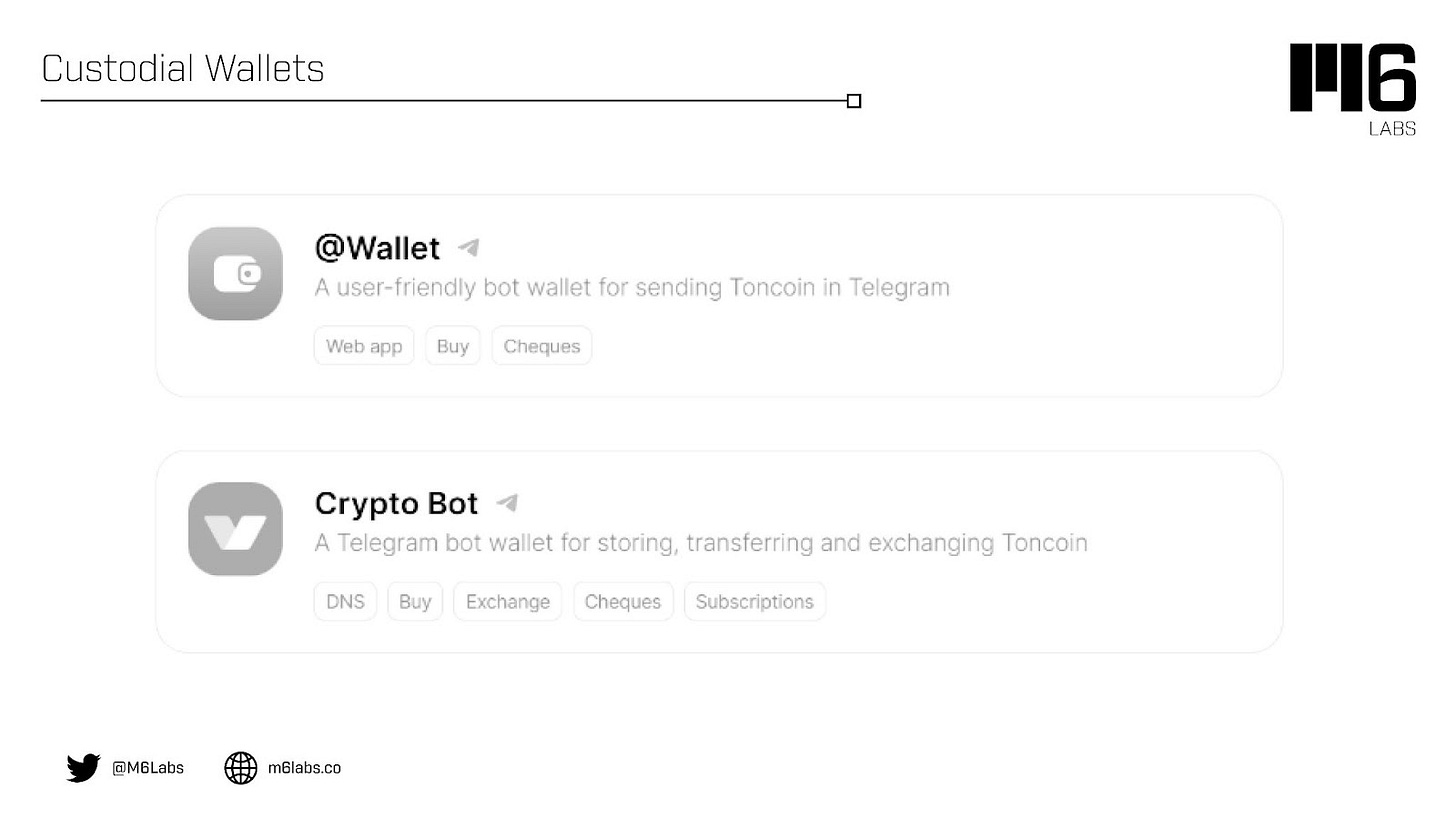Telegram users can now buy and sell cryptocurrencies without leaving the app. The Open Network (TON) is a fully decentralized Layer 1 blockchain designed by Telegram to onboard billions of users.
Telegram users can now buy and sell cryptocurrencies without leaving the app. The Open Network (TON) is a fully decentralized Layer 1 blockchain designed by Telegram to onboard billions of users.
The Open Network is a Layer 1 blockchain that is scalable, shardable, and designed to attract billions of users and enable quick, low-cost, and energy-efficient blockchain transactions. Every feature was designed with everyday users in mind.
TON has drawn much attention and is still growing despite market volatility. Following the FTX saga, the open-source protocol has been one of the few ecosystems to remain afloat.
History of TON
Telegram Open Network is a blockchain developed by Telegram. After the project was dropped, it was transferred to the community and renamed The Open Network.
Telegram vs. SEC
In 2020, after its court case, the Telegram team agreed on a settlement with the U.S. Securities and Exchange Commission and was forced to cease its work on The Open Network.
Telegram CEO Pavel Durov and his brother Nikolai created Telegram Open Network in 2018. After failing to register the $1.7 billion in token sales from the ICO, the SEC ordered Telegram to halt sales of $GRAM, the previous token linked to the TON blockchain.
In May 2020, founder Pavel Durov announced the end of Telegram’s participation in blockchain development and began issuing refunds to early investors.
Thanks To The Community, We Saw The Revival
After Telegram abandoned the TON project, a group of developers kept it afloat, renaming it The Open Network and rebranding $GRAM (which never actually launched) as TON. Durov expressed his support for the project last December 2021, stating, “I’m proud that the technology we created is alive and evolving…TON is ahead of everything else in the blockchain realm.”
TON’s Goal
In one interview, a TON Foundation representative stated, “TON is intended for millions of users, and one of our goals is to make the use of blockchain no more complicated than using applications that users are used to.”
Although Bitcoin and Ethereum were the pioneers of blockchain, these networks have a number of problems. People find it challenging to use cryptocurrencies for everyday purchases due to high fees, slow transaction speeds, and a significant learning curve when applying the technology daily.
In just one year, a complete ecosystem of all the necessary products and services was created, including tokens, non-fungible tokens, staking, domain names, marketplaces, multifunctional wallets, DEXs, and other DeFi services.
TON has three bridges, one on Ethereum and the others on BSC and Orbit Bridge. TON is the network’s native cryptocurrency used to pay fees to execute smart contracts, use dApps and participate in governance. The Open Network is currently operational with 240 validators (as of December 1st, 2022) and 1.4 million addresses.
In April 2022, the TON Foundation received 0.5 billion TON in donations to the reserve from early miners of the tokens (Telegram distributed the testnet tokens via Proof-of-Work mining, which was completed in the summer of 2022).
TON can validate and process millions of transactions per second by supporting dynamic sharding and work chains. In other words, TON’s adaptable architecture allows it to expand indefinitely without sacrificing performance.
Telegram’s Cryptocurrency – $TON
Although Telegram is no longer actively involved with The Open Network and it’s independent team, TON remains linked to the app. @wallet allows users to buy TON and send crypto to users via chat without fees. With Wallet Bot, it is also possible to buy cryptocurrencies with a credit card and perform peer-to-peer transactions.
TON was designed to support billions of concurrent users, unlike most other blockchain ecosystems. It accomplishes this through blockchain sharding, which involves using multiple subnetworks or shards on the identical blockchain to complete tasks efficiently. Each shard serves a specific purpose and helps to avoid large backlogs of unverified blocks.
The TON network is a PoS network, and $TON is used to validate transactions and reward validators. Nominators earn rewards by lending tokens to validators. A nominator must join a pool and stake assets to lend tokens. Smart contracts are then used to manage nominators and validators. Ton is accepted as payment for services and applications on the TON blockchain.
TON Ecosystem
Ton is well-known for its practicality and emphasis on efficiency. The goal is to make it as simple as possible for the end user to find utility for the token. The TON development community has also worked hard to incorporate many advanced features that distinguish the token from competitors.
TON introduces radical new concepts to smart contract development. It was designed sometime after Ethereum was launched, so it benefited from learning what works well in the EVM model and what could be improved. The most important thing to understand about TON is that it was created to put blockchain in the hands of every human on the planet.
TON Storage
The idea of data storage in a decentralized way isn’t new, but TON Storage takes it further. It functions similarly to Dropbox, with the benefit of private encryption from a private key, adding a layer of security to private and public online storage.
TON Proxy
For users, privacy is always a top priority. Users can use TON Proxy to connect to the TON network – networks like TOR or I2P. They can avoid censorship and easily access dApps as a result of this.
Smart Contracts
Like many other blockchain ecosystems, TON relies on smart contracts to expedite on-chain transactions. All blockchain smart contracts are executed using TVM (TON Virtual Machine). TVM enables the deployment of highly complex smart contracts.
TON DNS
TON DNS (TON domain name service) aims to improve the usability of cryptocurrency wallets, accounts, smart contracts, and other features and websites (TON Validators, TON Apps, TON Bridge, etc.). TON DNS gives users names that are easy to remember rather than strings of numbers and letters.
TON DNS functions similarly to a social media handle. Users can use the blockchain to register domain names and usernames. Several simple apps, including cryptocurrency wallets, support TON DNS.
TON Apps & Services
The TON blockchain is home to several dApps and services that utilize smart contracts:
TON Services enables developers to create new blockchain applications. These third-party apps are accessible via a user-friendly interface. TON also provides a searchable registry of all dApps and services on the blockchain.
StickerFace
StickerFace allows users to create NFT avatars on the network. Users can use this avatar in a variety of TON games and apps. StickerFace has been working on adding animations and 3D effects in addition to a wide range of wearable accessories for the avatars.
TON Diamonds
TON Diamonds is a blockchain-based decentralized marketplace where digital art can be easily purchased as NFTs from digital artists.
TON CATS and TON Hamsters
There are many NFT art projects, such as TON CATS and TON Hamsters. Here is a list of unique NFT projects.
Wallets
There are two types of TON custodial wallets. It’s advisable to use @wallet to complete transactions through Telegram. Ton can also be easily stored, transferred, and exchanged using @cryptobot.
TON provides custodial wallet services and collaborates with several third-party noncustodial wallets, with 377,017 unique TON wallets currently completing thousands of daily transactions. Custodial wallets are a good option for users who want straightforward solutions. Users who want more control over their assets should consider non-custodial wallets like Tonkeeper, which Telegram also chose for its Fragment.com utility.
TON’s Utility
The token is most commonly used as a commission payment for blockchain transactions. Courtesy of sharding, users can use the token to pay for cross-chain transaction fees or to create new work chains.
Some additional use cases include:
- Payment for decentralized data storage
- Payment for the use of TON Proxy
- Payment for TON DNS
- Payments within dApps on the blockchain
- Validator rewards for maintaining the blockchain
A significant milestone for the TON ecosystem – Commitment of $10M for TON Blockchain Effort
As part of its partnership with the TON Foundation, DWF Labs has pledged $10 million to support the TON ecosystem. All 50 seed investments are planned over the next 12 months, each aiming to accelerate TON’s growth and projects.
The emphasis will also be on increasing the number of TON ecosystem participants by increasing Ton volume across supporting platforms. Ton has a trading volume of nearly $20 million so far. During the first three months of the partnership, DWF Labs will develop a reliable OTC market while doubling the number of buyers and sellers.
What the future holds for TON and Telegram?
Since the app has over 700 million active users globally, it can catalyze further crypto adoption if the Wallet Bot reaches the target level of popularity.
When asked about the future of Telegram and The Open Network, a TON Foundation representative said, “Telegram is a user-friendly platform for everyone in the Web 3 world — both for communication and developing products using their disruptive technologies. Furthermore, the open platform allows developers to create working products with real-world use cases that can be deployed in the app.”
The developers remain the top priority, so improvements to tools, documentation, contest holdings, hackathons, and the balance of grant programs will continue. TON is the only modern blockchain that employs a novel and, at times, unexpected methods to attract users.
Work on new network components, such as the Payment Network, cross-chain solutions, TON Proxy, and TON Storage updates, is a strategic direction that will be pursued, but, first and foremost, the existing TON ecosystem should be streamlined to make it as functional and user-friendly as possible.
Some figures from the beginning of 2022 to November 2022:
- Number of network accounts: 128K → 1.4M
- Number of media subscribers (in 9 different languages): 600K → 2M
- Number of validators: 155 → 240
- CoinMarketCap rank: 206 → 26
What to look for in 2023?
TON has been one of the hottest projects in the crypto market over the last month, and it appears that next year will be exciting for TON. In terms of transaction speed and versatility, TON remains ahead of other Layer 1 blockchains. In addition to a quick block validation time, the blockchain provides several advanced scalability features, such as sharding support.
Ton is younger than other significant Layer 1 blockchains. It’s still growing and evolving, and it’ll be interesting to see what innovations TON brings in the coming years. The token will become more practical and appealing to a broader audience as developers add new features.





